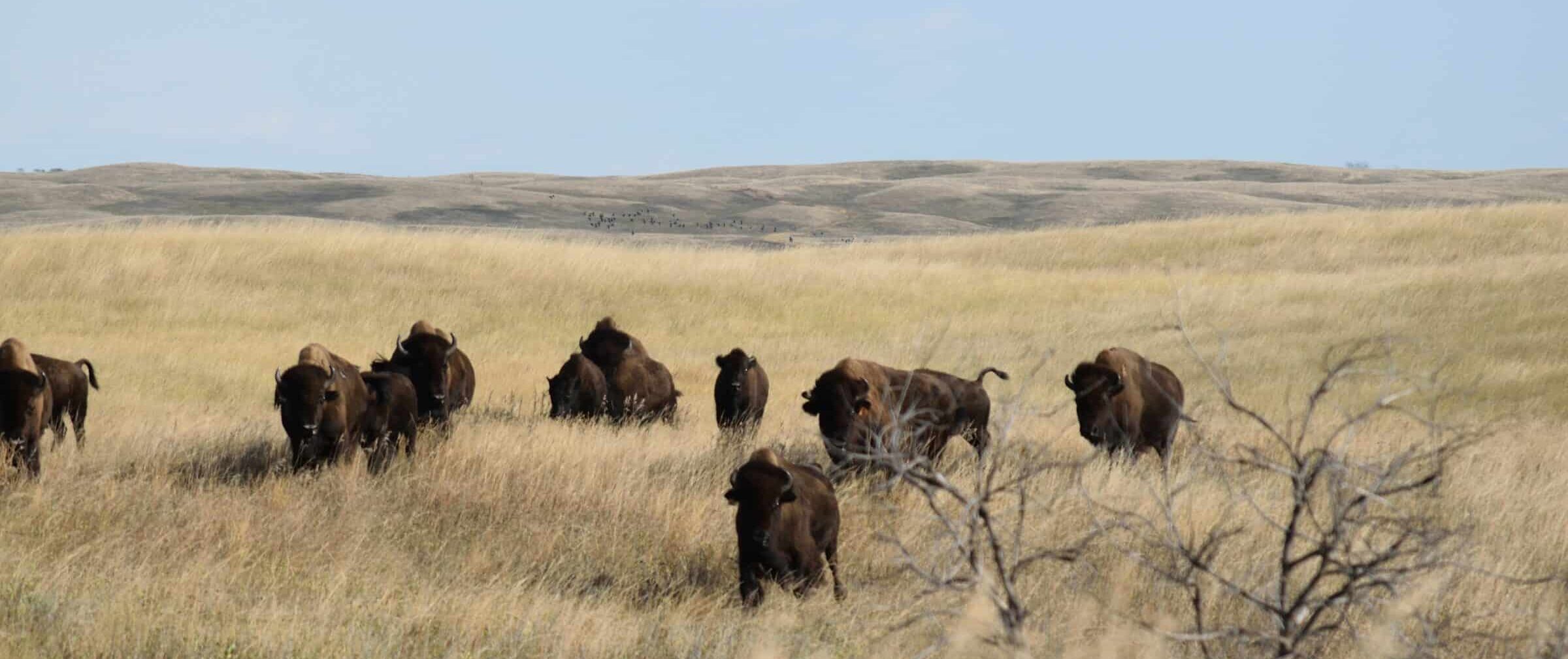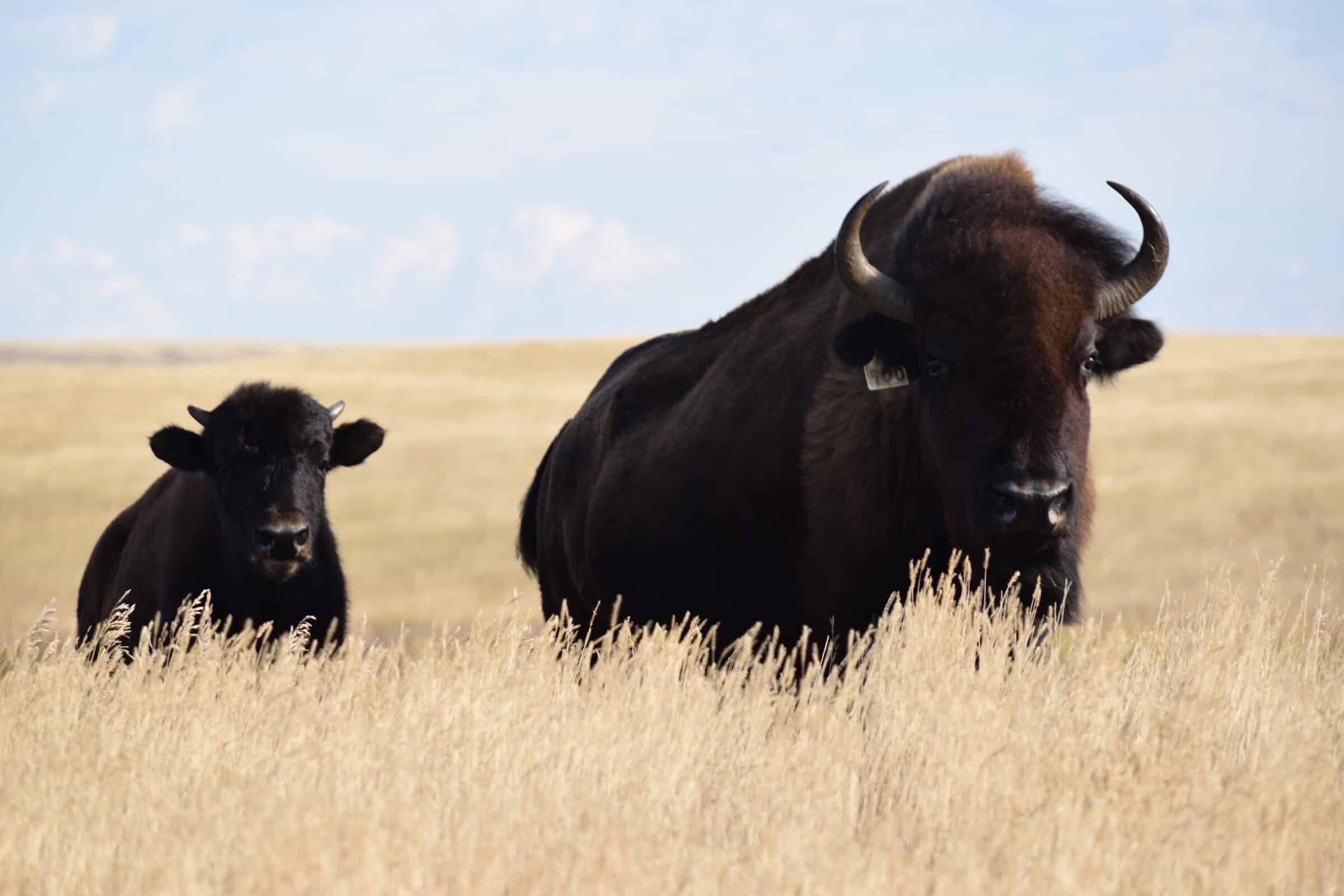News
October 28, 2024
Sask. bison ranching family delivers beefy biodiversity benefit
Adapted to life on the prairies, raising bison an incentive to conserve and restore grasslands

Across Saskatchewan, DUC has the privilege of partnering with hundreds of livestock producers, delivering sustainable agriculture programs of equal benefit to ranching and wildlife communities. And sometimes, that means we get to work with bison ranchers!
The Patterson family – Bill, Aletha and son, Aaron – run a herd of bison in the Parkbeg, Sask. area. Formerly cattle producers, the Pattersons liked the greater independence and toughness of bison and bought their first animals in 2011. They’re not alone.
According to the Saskatchewan Bison Association, bison are perfectly suited to our province’s wild and variable weather conditions. Thanks in part to thick fur and uniquely adapted physiology that allows their metabolism to morph with changing food availability, bison thrive on natural pasture. This can make them easier to feed; in many cases, animals require supplemental foods only during droughts or extremely harsh winters.
Bison ranching can provide a market incentive to conserve and restore additional pastureland; in some cases, farmers are returning annual fields to grass and this means great things for biodiversity. Bison are adapted to the prairie, but the prairie is equally suited to bison! Through grazing, manure deposition, even the trampling of hooves, bison are key agents of nutrient cycling. These vital nutrients become available for plant growth and thriving plants in turn provide resources for diverse wildlife species.
In the rolling landscape of the Missouri Coteau, the Pattersons’ bison graze portions of four quarters of pasture, including a long-term agreement to access DUC’s Forbes II Project, with its 160 acres of tame pasture, native prairie and wetlands.
Through agreements like this, as well as our forage incentive and land securement programs, DUC is proud to partner with the Pattersons and other Saskatchewan farm families. We’re making sure working landscapes keep working – for farmers, ranchers and the biodiversity that benefits us all.

